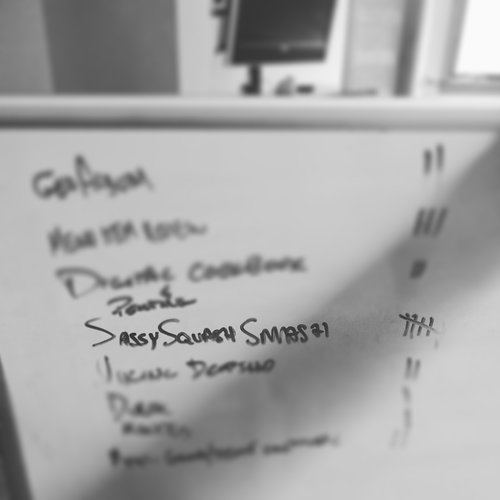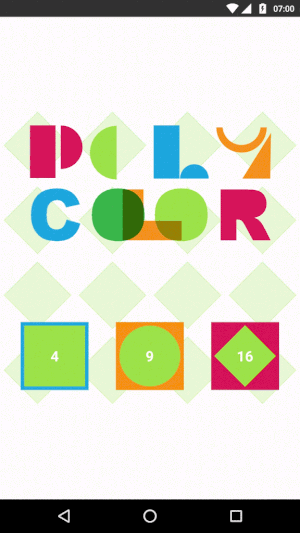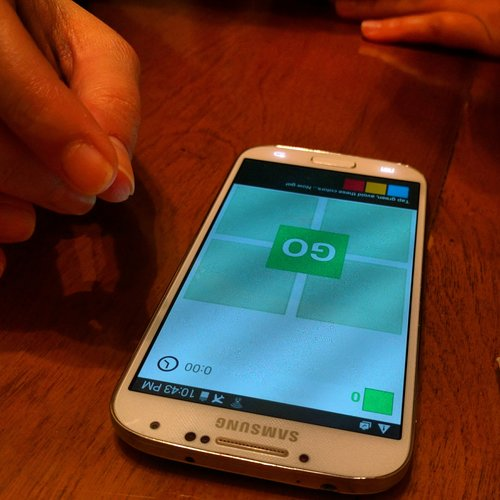Polycolor
PolyColor is a game engine, designed to be extensible through art, sound, and the timing of events.

Each season we come together, pitch each other ideas, then vote on what we want to build.
The Idea
We want to build a game. Playing with animations and triggering events like we did with Commuterific motivated us to try something new. The game we had in mind was far more complicated than anything we’d attempted, even in our professional lives, and we needed a starting point.
We aspired to make something that would be fun for us to play, and that we would keep coming back to playing. We had no delusions about becoming a AAA game developer or competing with the likes of social games already dominating sales leaderboards. With the core interaction patterns being a bit risky, we needed to build an app that we could play test with people outside of our group to ensure the game mechanics worked.

One of three game modes, shapes light up green, encouraging the user to tap them; however other colors are meant to be avoided.
The Goods
Hands down the biggest obstacle in this project was scope. PolyColor is a small subset of a bigger game project; PolyColor is the game engine that would live inside a future project. We anticipated any changes we would want to make to the game engine in our core project, we could make with the PolyColor game and playtest, without negatively affecting players of our core game. Staying focused on keeping things simple, not introducing unnecessary flourishes or complicated UI patterns remained a challenge throughout this project. Our second major challenge was around sound. The bigger-picture game is intended to have sound effects and music, but only as words on a scope definition: we hadn’t really worked with incorporating sound into projects. Our sound designer worked up a handful of different loops in an attempt to both anticipate how long a user would engage with the game and to build some audible parallels to the algorithms presented in the game. For example, when an algorithm is designed to peak in the game, the first loop of the music becomes more involved.
An additional noteworthy topic is acquiring playtesters. We utilized a Facebook group of likeminded people – not app developers, but who we anticipated might be a quirky part of our target audience for our bigger-picture game. We reached out with specifics on what we wanted to test, compensation for testing, and what feedback we wanted to capture. We were met with great enthusiasm, pulled a few dozen playtesters who even converted to actual players once we launched. (And by the way, while we offered no compensation, we were asked by a few prospects if we were planning on paying cash for feedback.)

What is it about little green squares that just make you want to tap’em?
The Product
PolyColor is a simple game of shapes and colours that encourages the player to tap on green shapes, and avoid tapping on decoys – shapes of different colours – to earn points. To keep the gameplay interesting, we introduced a few simple algorithms to affect the frequency of decoys and the speed at which any shapes would appear. We built three accessible levels, maintaining the frequency and speed algorithms, but increasing the number of objects a player would need to interact with to score points.
PolyColor was offered on Android.
